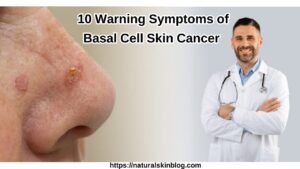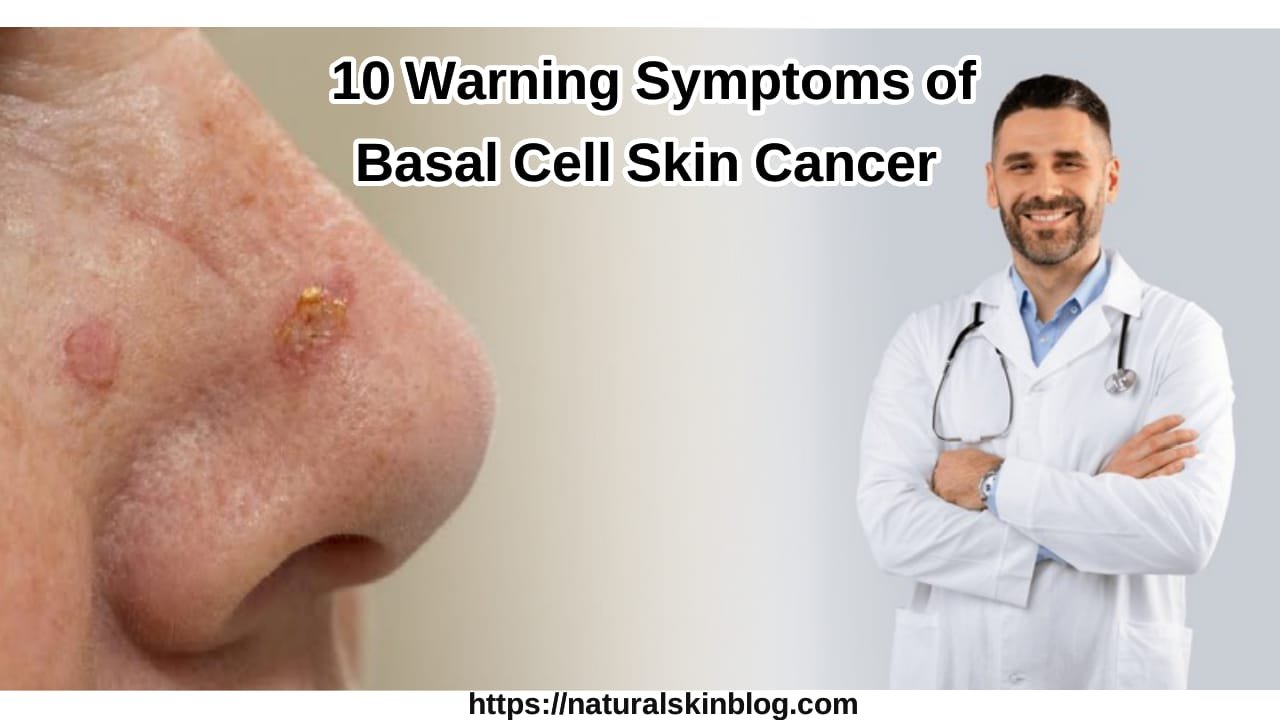Symptoms of basal cell skin cancer are the most common type of skin cancer worldwide, accounting for a significant portion of diagnoses each year. While it’s generally less aggressive than other forms of skin cancer, early detection remains crucial for successful treatment. Understanding the warning signs and symptoms can empower individuals to take proactive measures to safeguard their skin health. In this article, we’ll delve into the ten warning symptoms of basal cell skin cancer, equipping you with the knowledge to recognize potential indicators and seek appropriate medical attention when necessary.
visit Natural Skin Blog for more tips about natural skin

Uncovering the Symptoms of Basal Cell Skin Cancer
which may be shiny with small blood vessels running over it It may also present as a raised area with ulceration Basal-cell cancer grows slowly and can damage the tissue around it, but it is unlikely to spread to distant areas or result in death
Persistent Wound that Doesn’t Heal
One of the primary warning signs of basal cell skin cancer is a sore or wound that refuses to heal. These wounds may bleed occasionally or scab over but persist despite conventional treatment methods. Pay close attention to any sore that lingers for more than a few weeks without showing signs of improvement.
Shiny, Pearly Bump
Basal cell skin cancer often manifests as a shiny, pearly bump on the skin’s surface. This bump may appear translucent or waxy and is typically flesh-colored or slightly pink. While it may resemble a harmless pimple or cyst, its persistence and peculiar appearance warrant further examination by a dermatologist.
Irregular Borders
Unlike benign skin growths, basal cell skin cancer lesions often have irregular borders. Instead of a smooth, uniform edge, these growths may exhibit scalloped or notched edges. Observing the border characteristics can provide valuable insights into the nature of the skin abnormality.
Slow-Growing Ulcer
Another warning sign of basal cell skin cancer is the presence of a slow-growing ulcer or sore. These ulcers may develop spontaneously or result from an existing bump or lesion. They tend to expand gradually over time, sometimes accompanied by intermittent bleeding or crusting.
Reddish Patch or Bump
A reddish patch or bump on the skin that persists for an extended period can indicate basal cell skin cancer. These patches may resemble eczema or dermatitis initially but fail to respond to typical treatments. If you notice a persistent red spot that doesn’t resolve, it’s essential to have it evaluated by a healthcare professional.
Scar-Like Area
Basal cell skin cancer can sometimes present as a scar-like area on the skin, particularly in areas prone to sun exposure. This scar may lack a plausible explanation, appearing without any history of trauma or injury. If you notice an unusual scar-like formation, especially on the face, neck, or scalp, consult a dermatologist promptly.
Oozing or Crusting
Oozing or crusting of a skin lesion is another potential warning sign of basal cell skin cancer. While minor crusting or scabbing is common with benign conditions, persistent oozing or crusting, especially when accompanied by other symptoms, warrants medical evaluation.
Change in Skin Texture
Basal cell skin cancer can alter the texture of the skin in affected areas. You may notice areas of roughness, scaliness, or thickness that develop gradually over time. These changes in skin texture often occur in conjunction with other warning signs, prompting further investigation.
Pigmented Lesion with Irregular Borders
Although basal cell skin cancer is primarily non-pigmented, certain subtypes may exhibit pigmentation. If you notice a pigmented lesion with irregular borders or asymmetry, it’s essential to rule out the possibility of basal cell carcinoma. While less common, pigmented basal cell carcinomas can pose diagnostic challenges and require specialized evaluation.
Sensation of Itchiness or Pain
In some cases, basal cell skin cancer lesions may cause localized itchiness or pain. This discomfort may vary in intensity but persists despite conservative measures. If you experience unexplained itchiness or pain in a specific area of your skin, consider scheduling a dermatological assessment to rule out underlying malignancy.
Conclusion
Awareness of the ten warning symptoms of basal cell skin cancer is paramount in promoting early detection and prompt intervention. By familiarizing yourself with these signs and staying vigilant about changes in your skin’s appearance or texture, you can take proactive steps to safeguard your health. Remember, timely diagnosis and treatment are key factors in achieving favorable outcomes in skin cancer management. If you notice any of the warning signs mentioned in this article, don’t hesitate to consult a qualified healthcare professional for further evaluation and guidance. Your proactive approach could potentially save your life!

“This piece is a treasure trove of information! The thorough research and clear explanations make it an indispensable guide for readers.”
“I love how this article combines thorough research with an accessible writing style. It’s informative and easy to digest, making learning enjoyable.”